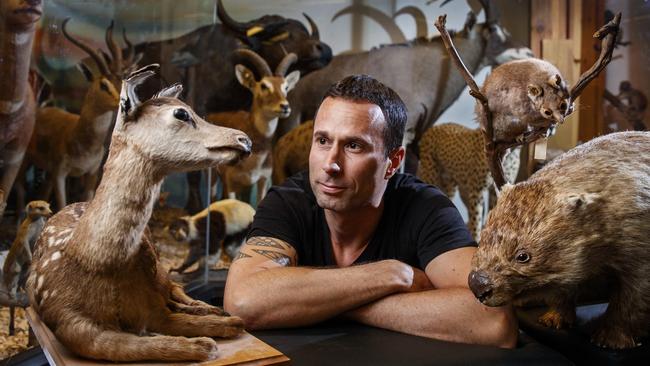Adelaide research reveals gender bias towards male mammal specimens in museums around the world
Even death can’t free you from gender bias, a new study indicates, with Adelaide researchers revealing even museum exhibits are likely to feature one sex more than the other.
SA News
Don't miss out on the headlines from SA News. Followed categories will be added to My News.
There is a gender bias towards male mammals of almost every kind in museum collections around the world, Adelaide research has revealed.
Lead author Dr Graham Gower developed a method to determine the sex of fossil remains using ancient DNA during his PhD at the University of Adelaide.
He decided to test it out on the lab’s samples of bison (186) and brown bears (91), as supervisor Dr Bastien Llamas explains, and “was a bit baffled by results”, because there was a high proportion (75 per cent) of males.
Then another research group published similar data on mammoths (72 per cent male) so Dr Gower thought there could be something in it. A colleague suggested looking at larger collections in museums.
“Sure enough, there was a bias as well in museum collections, except for a handful of mammals like bats, ant eaters and sloths,” Dr Llamas said.
“The game after that was to try to sort out the reason for it.”

At first, the team suspected biology – perhaps DNA was better preserved in male specimens, simply because males in mammals tend to be larger than females. But there was no problem extracting the DNA, male or female.
Size was definitely a factor, though. Bigger was better, for trophy hunters and museum collectors alike. Another possibility is that males of some mammal types such as mammoths also tended to range far and wide, more regularly putting themselves in danger and dying in random places.
“Unfortunately, there was a hidden bias in the collections,” Dr Llamas said.
“I don't think people ever paid attention to that, but it is there, so some of the conclusions that you make, depending on the biological discipline that you are part of, may actually be partly wrong, basically.
“The implications are that our views of past evolution, ecology and behaviour – at least in mammals – may have been heavily influenced by the male perspective.”
Scientists at the Australian Centre for Ancient DNA, with collaborators in Poland, found the male bias in species of nearly all mammal orders in four large museum collections: the American Museum of Natural History, New York; the Natural History Museum, London; the Smithsonian Institution National Museum of Natural History, Washington; and the Royal Ontario Museum, Ontario.
The research is published in the journal PNAS (Proceedings of the National Academy of Sciences of the United States).

